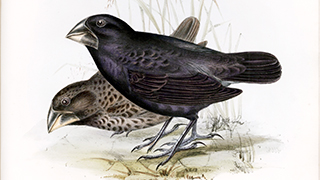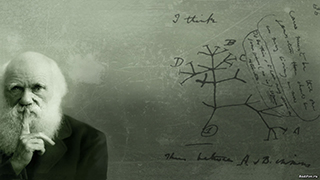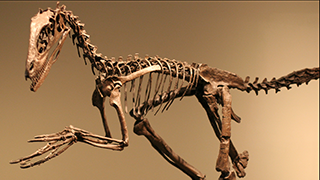Other Sites:
Robert J. Robbins is a biologist, an educator, a science administrator, a publisher, an information technologist, and an IT leader and manager who specializes in advancing biomedical knowledge and supporting education through the application of information technology. More About: RJR | OUR TEAM | OUR SERVICES | THIS WEBSITE
Photography Galleries
This page offers links to a variety of galleries of photographs, taken (created) by Robbins, on different themes and topics.
Each gallery includes a sample of photographs on a particular theme or topic, or a collection taken at some place and time, or ...

The Desert Garden contains more than 1,300 plants, including succulents and drought-resistant plants from around the world, within its 2.5 acres. The peak blooming period is January through March; however, these plants are interesting at any time of year because of their unusual shapes. Because the light at the park can be flat or harsh, I used a set of twin flashes, one on the camera and one hand held. Canon 5D Mk II, macro lens

Cholla Bay (Bahia la Choya) is a small village, near Puerto Peñasco, a city located in the northwest of the Mexican state of Sonora, about 100 km from the border with the U.S. state of Arizona. The village is both on the water (the northern end of the Sea of Cortez) and in a desert. In the village, one often sees water in the distance and dry, dusty soil in the foreground, giving the whole place an eerie feel. The colorful, and sometimes exotic architecture add to the mood, sometimes suggesting Tatooine with a beach. Canon 5D Mark II, various lenses ...

The Desert Garden contains more than 1,300 plants, including succulents and drought-resistant plants from around the world, within its 2.5 acres. The peak blooming period is January through March; however, these plants are interesting at any time of year because of their unusual shapes. Because the light at the park can be flat or harsh, I used a set of twin flashes, one on the camera and one hand held. Canon 5D Mk II, macro lens

Experiments in macrophotography, with new lens: I acquired a new macro lens, so decided to walk around the house taking a snap here and there. The Pen E-P5 was the first camera I had used for macro photography that allowed you to focus and take the shot by touching the display screen. This is especially useful for macrophography where autofocus is not likely to focus on the part of the image you had in mind. Olympus Pen E-P5, M.Zuiko ED 60mm f2.8 Macro Lens

Around fifty or sixty years ago, in Niles, Michigan, there was a small "pool hall" (actually just two tables in repurposed garage), located near the east bank of the river, towards the end of Sycamore Street. It was nothing fancy and served no other purpose than to provide a place for people to play pool — usually 8-ball or 9-ball or 6-ball, or some variant on those games. Every once in a while somebody would play some straight pool. The proprietor (shown in these pictures sitting with a cigarette or racking balls) was John Billups, better known as Skip. Skip had an old, horizontal vending machine (that cooled by keeping the bottles immersed in cold water) for soda pop. I don't remember whether they were a nickel or a dime each. Minolta SRT-101, 50mm F1.4 normal lens
RJR Experience and Expertise
Researcher
Robbins holds BS, MS, and PhD degrees in the life sciences. He served as a tenured faculty member in the Zoology and Biological Science departments at Michigan State University. He is currently exploring the intersection between genomics, microbial ecology, and biodiversity — an area that promises to transform our understanding of the biosphere.
Educator
Robbins has extensive experience in college-level education: At MSU he taught introductory biology, genetics, and population genetics. At JHU, he was an instructor for a special course on biological database design. At FHCRC, he team-taught a graduate-level course on the history of genetics. At Bellevue College he taught medical informatics.
Administrator
Robbins has been involved in science administration at both the federal and the institutional levels. At NSF he was a program officer for database activities in the life sciences, at DOE he was a program officer for information infrastructure in the human genome project. At the Fred Hutchinson Cancer Research Center, he served as a vice president for fifteen years.
Technologist
Robbins has been involved with information technology since writing his first Fortran program as a college student. At NSF he was the first program officer for database activities in the life sciences. At JHU he held an appointment in the CS department and served as director of the informatics core for the Genome Data Base. At the FHCRC he was VP for Information Technology.
Publisher
While still at Michigan State, Robbins started his first publishing venture, founding a small company that addressed the short-run publishing needs of instructors in very large undergraduate classes. For more than 20 years, Robbins has been operating The Electronic Scholarly Publishing Project, a web site dedicated to the digital publishing of critical works in science, especially classical genetics.
Speaker
Robbins is well-known for his speaking abilities and is often called upon to provide keynote or plenary addresses at international meetings. For example, in July, 2012, he gave a well-received keynote address at the Global Biodiversity Informatics Congress, sponsored by GBIF and held in Copenhagen. The slides from that talk can be seen HERE.
Facilitator
Robbins is a skilled meeting facilitator. He prefers a participatory approach, with part of the meeting involving dynamic breakout groups, created by the participants in real time: (1) individuals propose breakout groups; (2) everyone signs up for one (or more) groups; (3) the groups with the most interested parties then meet, with reports from each group presented and discussed in a subsequent plenary session.
Designer
Robbins has been engaged with photography and design since the 1960s, when he worked for a professional photography laboratory. He now prefers digital photography and tools for their precision and reproducibility. He designed his first web site more than 20 years ago and he personally designed and implemented this web site. He engages in graphic design as a hobby.
RJR Picks from Around the Web (updated 11 MAY 2018 )
Old Science

Weird Science

Treating Disease with Fecal Transplantation
Fossils of miniature humans (hobbits) discovered in Indonesia
Paleontology

Dinosaur tail, complete with feathers, found preserved in amber.
Astronomy

Mysterious fast radio burst (FRB) detected in the distant universe.
Big Data & Informatics

Big Data: Buzzword or Big Deal?
Hacking the genome: Identifying anonymized human subjects using publicly available data.